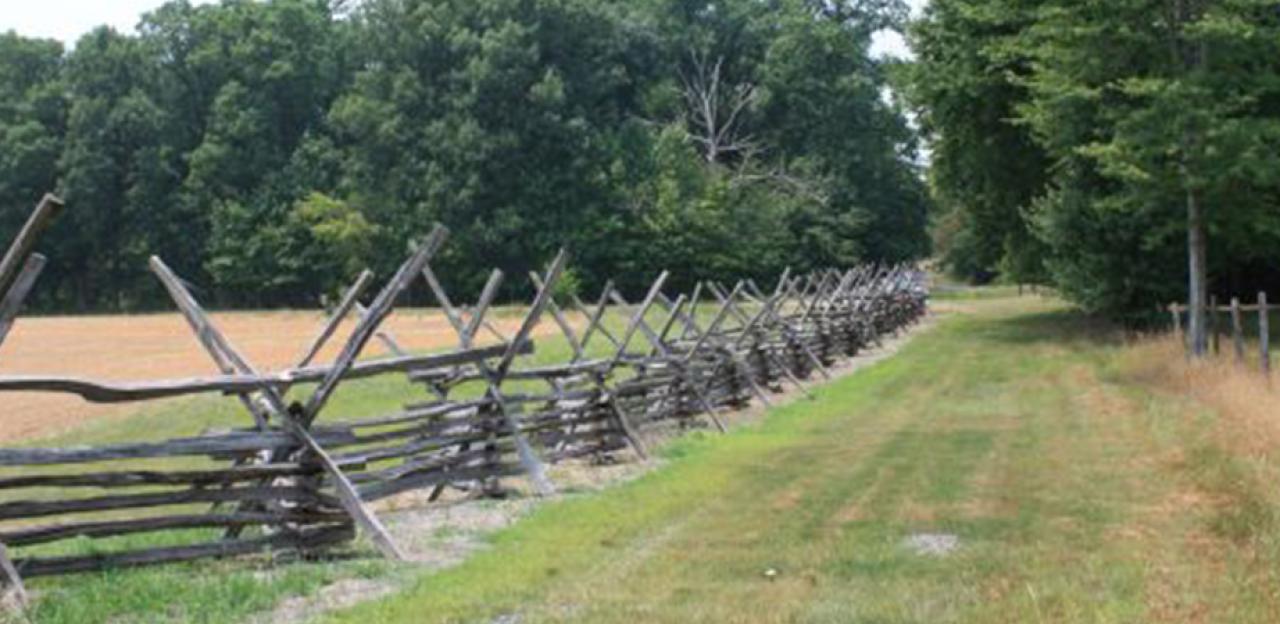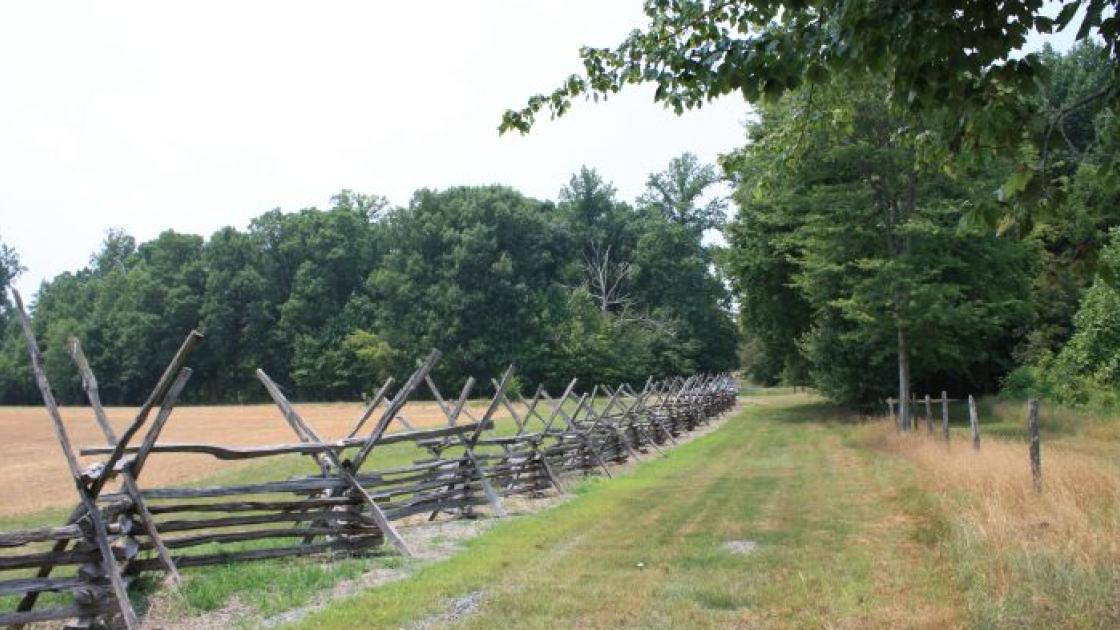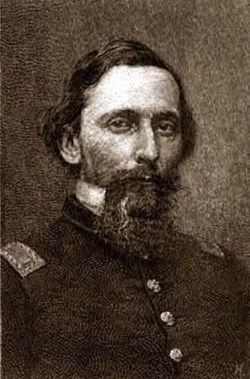10 Facts: Cedar Mountain

The Battle of Cedar Mountain was the first serious clash between the Army of Northern Virginia and Maj. Gen. John Pope's new Army of Virginia. The close-run Confederate victory at Cedar Mountain was the springboard for the 1862 Northern Virginia campaign that brought the fighting back to the fields of Manassas in August of 1862.
Fact #1. Robert E. Lee hoped to bring his whole army to bear upon newly appointed Union commander John Pope before he could be reinforced.
While Pope moved against the rail junction at Gordonville, Virginia, Lee divided his forces, remaining opposite General George B. McClellan while sending a separate force under “Stonewall” Jackson to smash Pope’s army before McClellan could reinforce him. Pope divided his forces along the Rapidan River, which presented Jackson an opportunity to strike at the divided Union columns. But the oppressive heat, Jackson’s own secrecy, and confusion among his subordinate generals hampered Confederate progress and gave Pope crucial time to send reinforcements under General Franz Sigel to join with General Nathaniel Banks at Cedar Mountain.
Fact #2. At Cedar Mountain, there were twice as many Confederate forces as Union troops.
The Confederacy brought more than 16,000 men to bear against the 8,000 Union soldiers at Cedar Mountain. Like Gaines’ Mill six weeks earlier, the battle flies in the face of the conventional wisdom stating that the Federals always had superior numbers on the battlefield.
Fact #3. Upon arriving in the east, Pope published a series of incendiary orders against the civilian populace of Virginia and antagonized the men of his own army.
The documents—known as General Orders 5, 7, 11, and 19—spelled out Pope’s design for future operations in Virginia. Number 5 stated that, “troops of this command will subsist upon the country in which their operations are carried on,” while 7 and 11 spelled out how the army was supposed to treat Virginia’s civilian population. Included were measures that denied civilian compensation for Confederate incursions into their lands, held that all males who refused to sign an oath of loyalty to the Union would be arrested on sight or exiled, and assessed responsibility for all damage caused to Union military property within five miles of their lands to civilians. Pope also isolated himself from his own men, giving a speech after his arrival in Virginia in which he stated, “I come to you from the West, where we have always seen the backs of our enemies; from an Army whose business it has been to seek the adversary and beat him when he was found, whose policy has been attack and not defense.” A fellow officer later said of Pope, “I don’t care for [him] a pinch of owl dung.”


Fact #4. Confederate General Charles S. Winder was killed in the artillery barrage that preceded the battle.
Winder was sick for several days before the battle, and his doctor advised him not to fight. He refused. Stirred by what Jackson later called “ardent patriotism and military pride,” Winder mounted his horse and charged toward the Confederate artillery fire, which signaled the beginning of the battle. During the fierce cannonade that followed, an errant shell crashed amid the Confederate artillery and ripped through Winder’s left side. Winder was carried to a nearby schoolhouse, where he died a few hours later. A modern road near the old battlefield now bears his name.
Fact #5. The Crittenden Gate stood at the center of the Confederate line at the battle.
The Confederates positioned their artillery along an intersection at the Orange-Culpeper Road and Crittenden Lane (named for a prominent family in the area). That spot became known as “the Gate.” Although Confederate guns fired shot after shot from this position for nearly two hours at the start of the battle, Union cannon rained deadly return fire which slowed any possible advance of Confederate infantry through the area. Union men of the 46th Pennsylvania, the 28th New York, and 5th Connecticut Infantry units nearly seized this position before the arrival of Confederate reinforcements on the battlefield.
Fact #6. Cedar Mountain was the only battle in which Stonewall Jackson ever drew his sword.
After two and a half hours, with the Confederate left flank on the verge of collapse, Jackson rode into the center of the storm waving his sword with the scabbard rusted to it from lack of use. Ignoring incoming fire from three sides, Jackson brandished his "sword" and a battle flag to rally the wavering Confederates. One witness wrote that "the escape of Jackson from death was miraculous. He was in the thickest of the combat." The famed leader arrested the panic and restored order. Jackson later referred to the battle as the “most successful of [his] exploits.”
Fact #7. Confederate General A.P. Hill arrived at Cedar Mountain in the nick of time to save the day.
As Jackson waved his sword in a gallant and desperate effort to buoy his men, A.P. Hill arrived with the six brigades of his Light Division. Their intervention and successful mounting of a counterattack as the sun set on the battlefield won the day for the Confederates. Hill repeated the feat just over a month later at the Battle of Antietam, arriving on the field just as Confederate defenses before the town of Sharpsburg seemed on the verge of collapse—saving the entire Army of Northern Virginia from certain destruction.
Fact #8. The first photos of dead horses on an American battlefield were taken at Cedar Mountain.
Mathew Brady photographer Timothy O’Sullivan took the only photographs of the battle’s aftermath. O’Sullivan helped usher in the era of documentary photography first at Cedar Mountain and then at Antietam the following month when the first photos of dead soldiers on an on an American battlefield were seen by the public.
Fact #9. Clara Barton performed her first field duty after the Battle of Cedar Mountain.
While the eventual “Angel of the Battlefield” took it upon herself to care for wounded soldiers in Washington, D.C., and on the battlefield after Bull Run in 1861, she only received official permission to accompany the U.S. Army to the front lines on August 3, 1862. Cedar Mountain erupted six days later and Barton spent two days and nights on the battlefield tending to the wounded, including Confederate prisoners, after her arrival on August 13.
Fact #10. The Civil War Trust has preserved several hundred acres at Cedar Mountain.
Part of this land sits around Virginia routes 15 and 657 (General Winder Road). It includes the area where Crittenden Gate once stood, along with a wheat field in which some of the bloodiest fighting of the battle took place. The Trust preserved 152 acres there in 1998 and added two more in 2010.
Bonus Facts:
- The battle is named for a nearby mountain in the Virginia Piedmont seven miles south of Culpeper, Virginia.
- A man named Slaughter owned a prominent house on Cedar Mountain.
- The Battle of Cedar Mountain is also known as Slaughter’s Mountain and Cedar Run.
- The battle was fought on an exceptionally hot day. It was 98 degrees as of 2 pm and fighting did not commence until 3:30, the hottest part of the day. William F. Goodhue, a private with 3rd Wisconsin Infantry regiment, noted that "[the sun's] burning rays stung and blistered our unprotected and upturned faces with all the fervor of a mustard plaster." This heat contributed to the difficulties faced by Jackson's army early in the battle.
- Cedar Mountain marked A.P. Hill's first service under the command of Jackson and began a feud between the two men that would rage until Jackson's death.
- Despite being outnumbered, the Federals attacked first at the battle. Confederate infantry and artillery dug in around the area of "the Gate" and were unable to counterattack after being pinned down by Union cannon.
- August 9th, 1862, was the 46th Pennsylvania Infantry’s bloodiest day when it charged against Stonewall Jackson across a wheat field. Of more than 500 engaged, 244 were lost.
- In the early 1900s, Judge Daniel A. Grimsley placed 56 stones at Cedar Mountain to mark the positions of Union and Confederate units at the beginning of the battle.
Learn more: Cedar Mountain Battlefield | T. J. “Stonewall” Jackson
This will be the only chance we will ever have to protect these 97 acres at Brandy Station, and the other 7 acres near Cedar Mountain, and we urgently...
Related Battles
2,353
1,338


